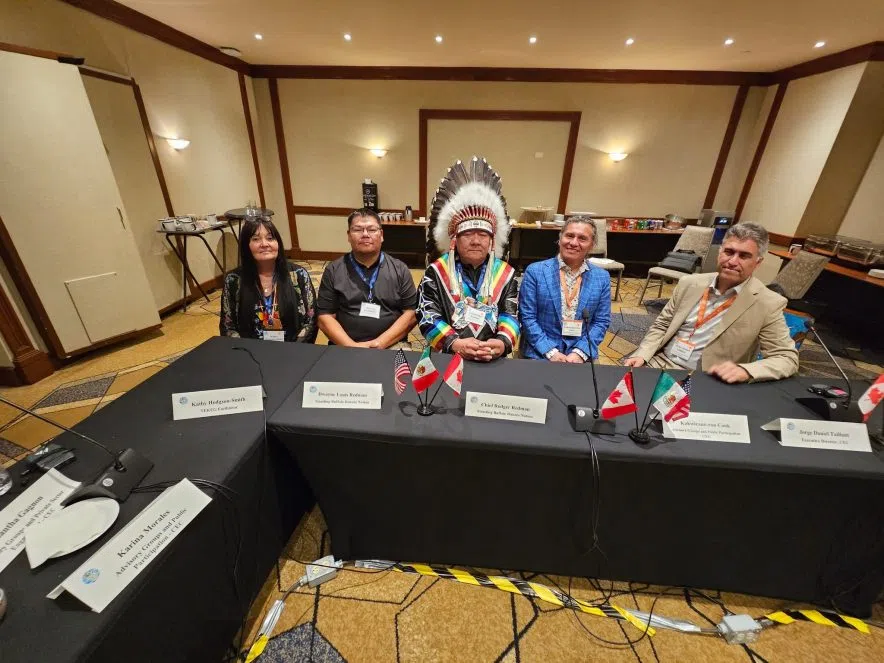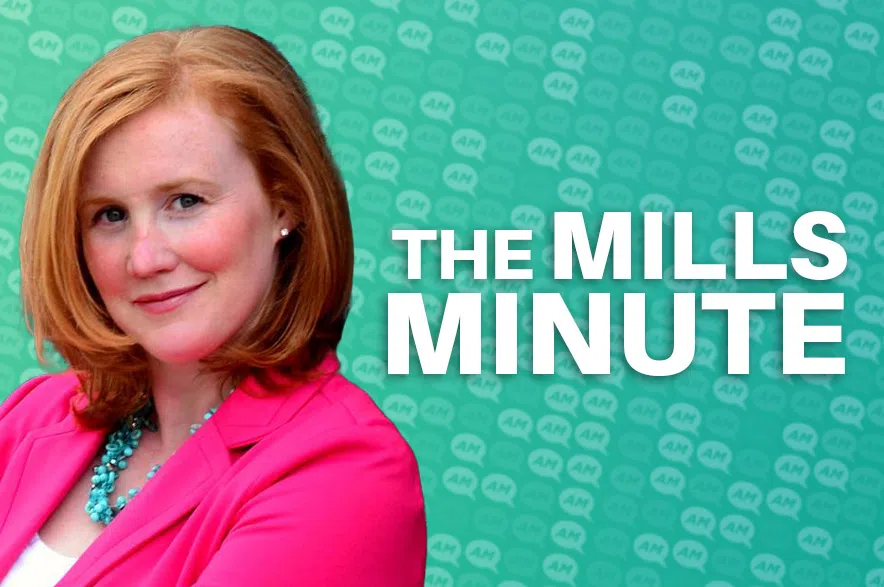Standing Buffalo Dakota Nation is moving forward with an Indigenous-led trade corridor spanning Canada, the United States, and Mexico, reviving ancient routes that existed long before national borders.
Chief Rodger Redman said the First Nation recently returned from a week of high-level meetings in Mexico City with government representatives from all three NAFTA (North American Free Trade Agreement) countries.
Read more:
- Saskatchewan exports still mostly tariff-free under CUSMA: Moe
- Saskatchewan NDP urges return of U.S. liquor ban in response to tariff hikes
While Standing Buffalo has been waiting years for Canada to formally acknowledge its sovereignty and legal framework, Redman said it took just days in Mexico to find willing partners abroad.
“We’re seeing more recognition from the U.S. and Mexico than from Canada,” Redman said.
“They’re open to working with us on cooperative federalism. Canada still isn’t listening.”
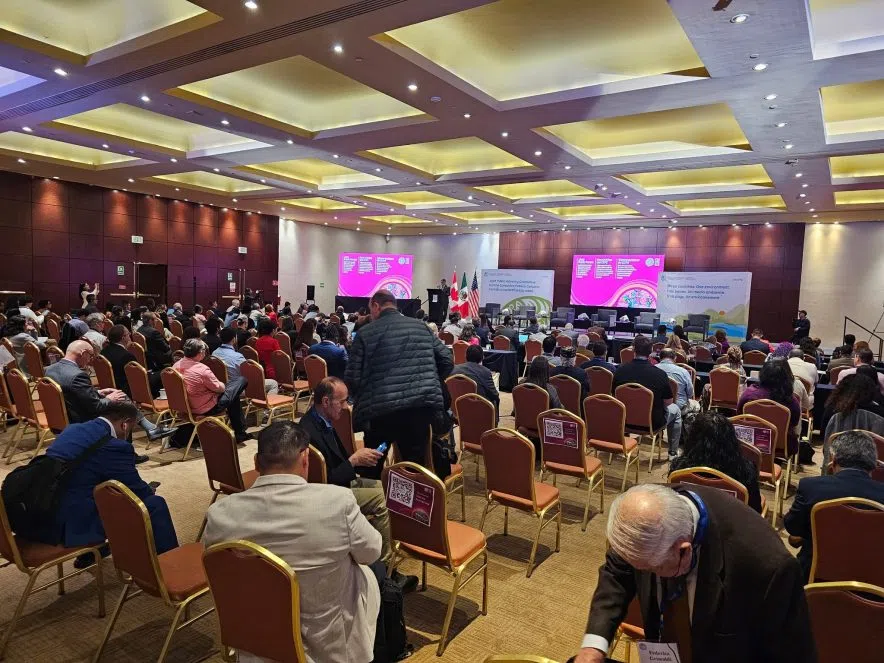
Hundreds of people attend the Commission for Environmental Cooperation’s public forum, where Indigenous leaders shared trade corridor plans rooted in traditional territory. (Standing Buffalo/Facebook)
‘We’re asserting our sovereignty’
The trade corridor is built on what Redman calls “pre-contact wealth” an interconnected network of Indigenous trade routes that supported the economy and movement of goods long before the creation of modern states.
Redman said those routes were respected through historical agreements with the British Crown, including a medal issued to Dakota leaders in 1763 that promised continued trade and alliance in exchange for military support.
Despite that relationship, Standing Buffalo is not party to any treaties in Canada. The Nation says that distinction is crucial: because it never signed over land or jurisdiction, its sovereign rights remain fully intact.
“We’re asserting our sovereignty,” Redman said. “We’re here to give them notice that we have our trade corridor, and we’re implementing that. We have every right to enter as a proud nation within our original territory.”
The First Nation’s legal and political strategy has been more than two decades in the making.
Redman said Standing Buffalo began opposing federal and provincial development projects over 20 years ago, arguing that Canada has a duty to consult but has failed to acknowledge the Dakota as rights-holders.
That fight has now reached federal court, where the Nation is in litigation with the Department of Justice and the Crown.
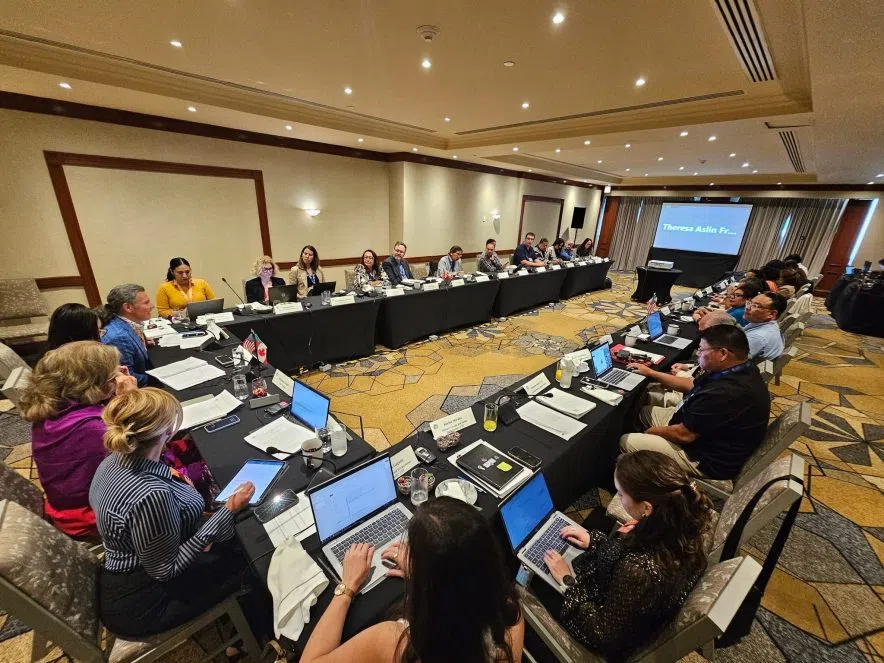
Discussions on Indigenous sovereignty and trade at the Mexico City summit. (Standing Buffalo/Facebook)
‘There’s momentum, and we’re moving forward’
Redman said the lack of recognition from Ottawa stands in stark contrast to what Standing Buffalo experienced in Mexico.
Standing Buffalo was formally invited to attend and present at meetings with Canadian, U.S., and Mexican representatives, including environmental and economic ministers, academic experts, and Indigenous leaders.
As a result of the trip, Standing Buffalo was invited to join an ad hoc environmental committee and pursue partnerships on multiple fronts.
“There’s momentum, and we’re moving forward with or without federal approval,” Redman said.
The trade corridor plan includes infrastructure development, environmental oversight, financial systems, and economic partnerships that Redman says reflect modern needs while staying rooted in Dakota values.
Standing Buffalo submitted a $2 billion infrastructure proposal to the Privy Council and provided its own consultation framework to both industry and government officials.
Redman said the corridor is not dependent on Canadian approval because the land belongs to the Dakota under their interpretation of international law, historical agreements, and oral tradition.
“Canada doesn’t own land,” Redman said. “They’re representatives of the Crown. And we never surrendered our territory. We never signed treaties.”
He added that the First Nation is asserting not only land-based rights but also jurisdiction over airspace, wind and solar energy, and cross-border logistics.
Redman said representatives from the Canadian military recently inquired about using Dakota airspace, an example he says of how sovereignty must be respected in all forms.
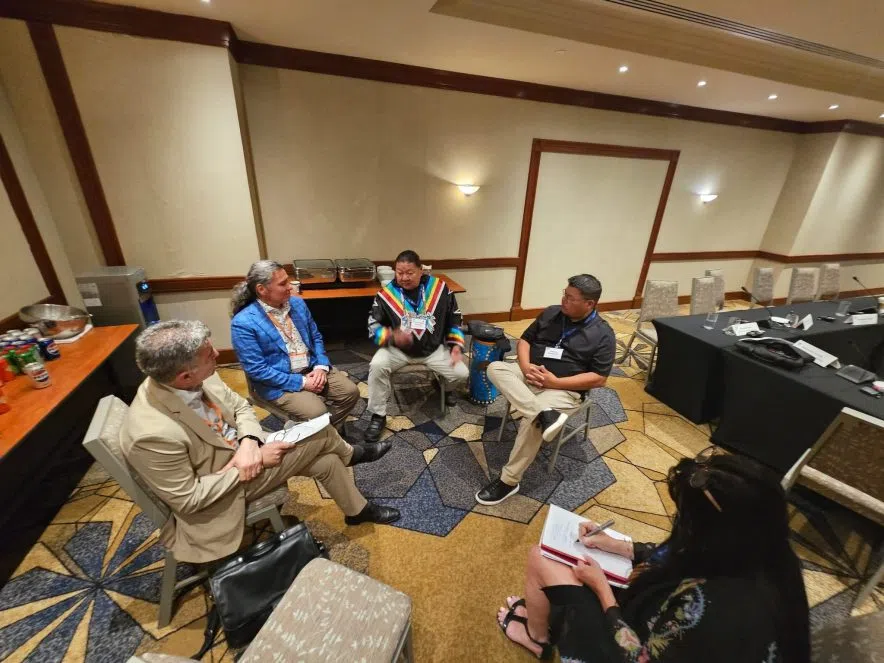
Standing Buffalo Dakota Nation Chief Rodger Redman (centre) speaks with international delegates during closed-door discussions on Indigenous sovereignty and trade in Mexico City. (Standing Buffalo/Facebook)
As part of its implementation plan, Standing Buffalo is working with academic institutions including Harvard University, McGill University, and the University of Arizona to create legal instruments and policy frameworks that support the corridor.
Redman said those partnerships will help establish long-term environmental and economic standards that reflect Dakota law and governance.
The corridor’s development also involves building trade agreements directly with Indigenous nations in the United States and Mexico. Redman said those discussions are ongoing but are already producing results, including collaborative planning, academic support, and the formation of cross-border Indigenous trade alliances.
“We’re bridging the gap with other Indigenous nations in Mexico,” he said. “And the academic side of it is just as strong. Professors and institutions believe in what we’re doing, and they’re helping us build the structure to make it work.”
Despite this progress, Redman said Canada has yet to respond to the Nation’s proposals. He criticized what he called “executive federalism,” where governments create legislation without Indigenous consent, then impose it unilaterally.
He said Canada needs to move toward cooperative federalism at the very least, and ultimately toward “imperial parity,” where Standing Buffalo is recognized as a sovereign nation equal to the Crown.
Read more:
